NIL
Pete Thamel explains UNC decision to hire Bill Belichick PR specialist
Amid the fallout from his CBS This Morning interview earlier this month, North Carolina reportedly planned to hire a PR specialist for Bill Belichick. ESPN’s Pete Thamel detailed what exactly that plan will look like. Pro Football Talk’s Mike Florio reported UNC was looking to bring in Brandon Faber, who previously served as the Chicago […]
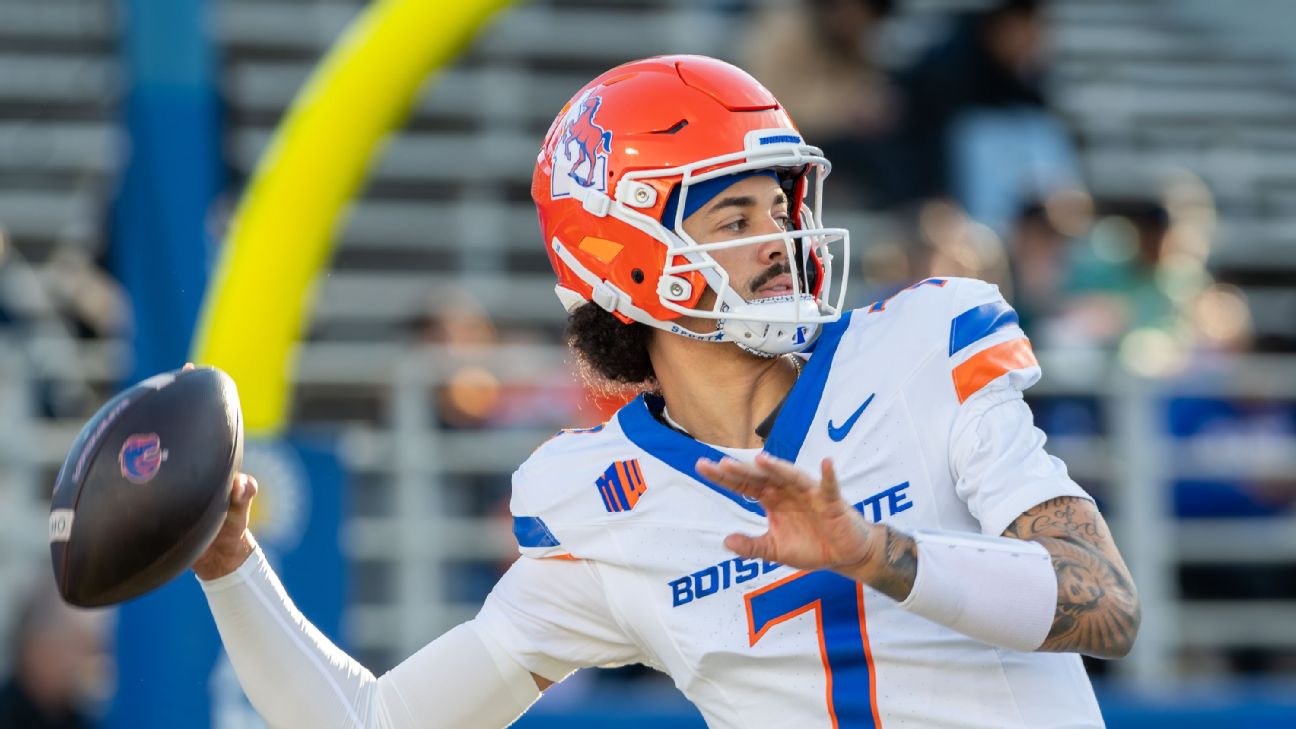
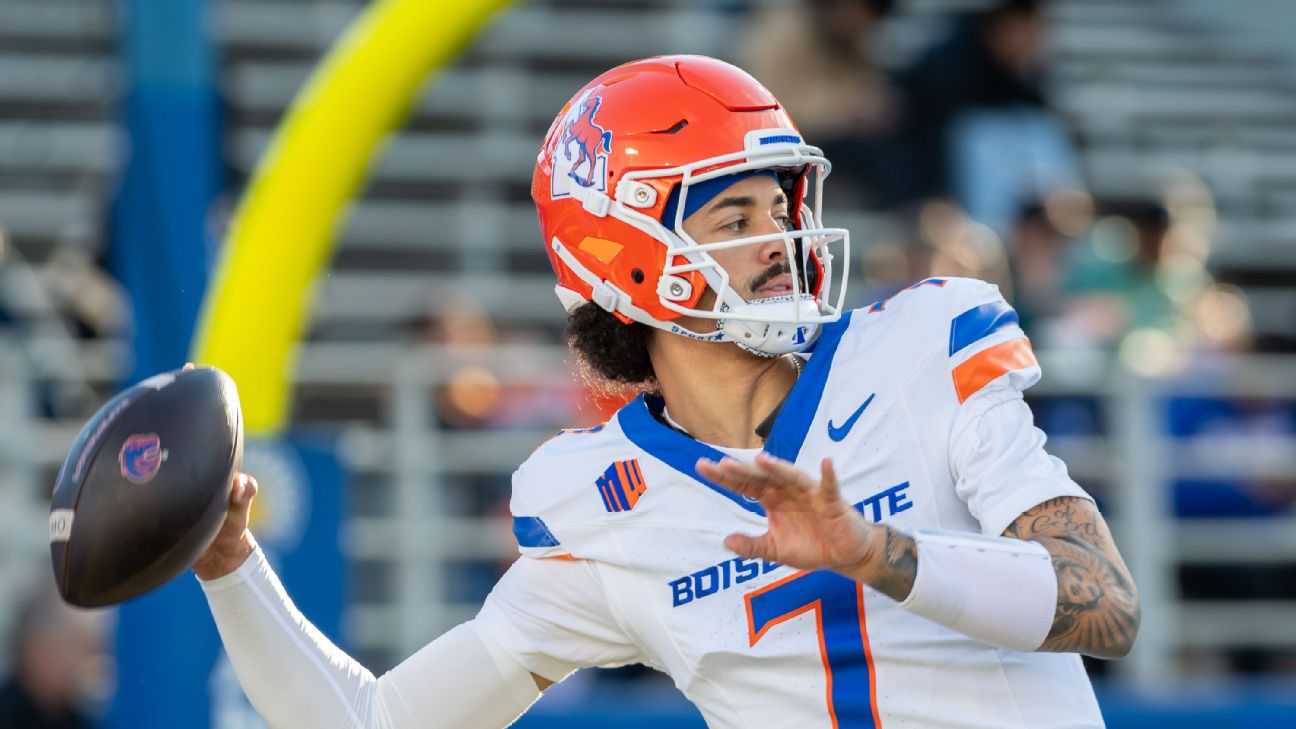

Amid the fallout from his CBS This Morning interview earlier this month, North Carolina reportedly planned to hire a PR specialist for Bill Belichick. ESPN’s Pete Thamel detailed what exactly that plan will look like.
Pro Football Talk’s Mike Florio reported UNC was looking to bring in Brandon Faber, who previously served as the Chicago Bears’ vice president of communications. Thamel said he will solely work with Belichick, along with some NIL-related duties, while the school will also handle someone to handle the general football program PR.
Additionally, Thamel heard more pushback around a report that said Belichick’s girlfriend, Jordon Hudson, was banned from the Tar Heels facilities. UNC also released a statement refuting that report. Thamel also noted “lessons” the school learned about handling the publicity around Belichick considering his decorated NFL career.
“Made a few calls to North Carolina today to kind of take the temperature of where things were,” Thamel said on SportsCenter Friday evening. “I think the most important thing I gleaned today is they pushed back very hard at the notion of Jordon Hudson being banned from the facility, as was being reported today. I was simply told, unequivocally, that’s untrue. I do think from talking to people at North Carolina today, there are some lessons that they have learned. They hired an internationally famous celebrity to be their head coach, and with that, everything’s amplified. His hire was one of the biggest stories in sports, and these recent brush fires have been amplified because he is Bill Belichick and he is known throughout the world.
“One thing I was told today that Carolina is doing to help better manage Belichick and the publicity that inherently is going to surround him is they’re going to bring in a PR specialist – a veteran NFL PR guy they’re in the process of hiring. A guy named Brandon Faber, who worked with the Bears. And he is going to work just with Bill Belichick, along with doing some NIL and branding for his UNC PR. That’s in addition to another PR person they’re bringing in to handle the regular team work.”
Additionally, Thamel pointed out a change he noticed around Hudson’s social media. He and others around the industry don’t see as many posts about North Carolina football, and he further pointed out the lessons those around the program learned over the last few weeks.
“Another observation that I’ve made, and others have made, since the initial CBS This Morning interview is Jordon Hudson has clearly taken a step back from the amount she’s posting and the amount she’s tying herself to UNC,” Thamel said. “I just think there’s some lessons learned for everybody here about the size of the spotlight around Bill Belichick.
“And ultimately … Bill Belichick’s going to be judged by wins and losses. There’s a feeling and anxiousness to get on to TCU, I think, from the people at UNC. But ultimately, that’s where this hire is going to be graded.”
NIL
‘Paying for a Mismatch’: Analyst Breaks Down USC’s $10M Tight End Deal
USC’s latest recruiting coup has sent shockwaves through college football: the Trojans landed five-star tight end Mark Bowman, reportedly set to earn up to $10 million in NIL deals. The staggering figure, more commonly reserved for quarterbacks, has ignited debate—but analysts say USC is investing in more than just a position. They’re paying for a […]

USC’s latest recruiting coup has sent shockwaves through college football: the Trojans landed five-star tight end Mark Bowman, reportedly set to earn up to $10 million in NIL deals.
The staggering figure, more commonly reserved for quarterbacks, has ignited debate—but analysts say USC is investing in more than just a position. They’re paying for a game-changing mismatch.

Why USC Paid $10 Million For A Tight End
When news broke that Bowman, the nation’s top tight end, would be earning between $8 million and $10 million in NIL deals at USC, the reaction was swift and polarized. Critics questioned the wisdom—and fairness—of such an outlay for a non-quarterback, while rival fanbases accused USC of buying its way to the top.
Yet, as analyst J.D. PicKell explained, the investment is about much more than Bowman’s position.
“USC is not paying for a tight end,” PicKell said. “USC is paying for a mismatch in their game plan every single weekend… You’re not thinking about how much you’re paying Mark Bowman when he’s catching a game-winning touchdown against Ohio State in the Big 10 Championship… The mismatch part of it is awesome. That’s what you’re actually paying for.”
Bowman’s rare blend of size, speed, and versatility makes him a nightmare for defenses, precisely the kind of weapon head coach Lincoln Riley has built his offenses around. Standing 6-foot-4 and weighing 225 pounds, Bowman moves like a receiver but blocks like a lineman, drawing comparisons to NFL-bound stars. In his last season at Mater Dei, he hauled in 32 passes for 435 yards and eight touchdowns, proving his ability to impact both the passing and running game.
USC’s approach is as much about strategy as it is about spectacle. Riley’s offense thrives on creating mismatches, and Bowman’s skill set fits perfectly into a system designed to exploit defensive weaknesses with tempo, motion, and creative personnel packages.
The Trojans aren’t just buying a player—they’re securing a tactical advantage that could define the next era of USC football.
Beyond the Numbers: The New NIL Reality
The Bowman signing emphasizes a massive change in college football recruiting. Even among signings sparked by NIL, financial packages are becoming a central part of the pitch for elite talent.
Though the $10 million number is eye-popping, it’s also emblematic of the market’s new realities. Top programs use their resources and location — USC’s campus in Los Angeles is a big part of the pull — to sell athletes on exposure and the earning potential few schools can offer.
But money wasn’t the only factor in Bowman’s decision. USC’s proximity to his Southern California home, the prestige of playing for a historic program, and the chance to be a focal point in Riley’s high-powered offense weighed heavily. Other bluebloods like Georgia and Texas were in the mix with competitive offers, but USC’s holistic pitch proved decisive on and off the field.
But they have not been without controversy. Others fear that NIL-created recruiting disparities will widen the haves-and-have-nots gap, ruin team chemistry, and chip away at the establishment amateur ethos of sports at the college level.
KEEP READING: ‘It’s a Blessing to Carry That Legacy’: 5-Star Ohio State Commit Chris Henry Jr. Reflects on His Father’s Impact
But as PicKell and others say, this is just the new normal: programs must be aggressive and clever to get the sorts of difference-makers that can change the game.
College Sports Network has you covered with the latest news, analysis, insights, and trending stories in football, men’s basketball, women’s basketball, and baseball!
NIL
Villanova's basketball team should benefit from the NIL settlement, but little else is immediately clear
For Philadelphia, whose only FBS football program is forever on life support, the biggest news from the House v. NCAA settlement appears to be that Big East member Villanova belongs to the conference whose men’s basketball programs are expected to have the most money at their disposal of any conference. The settlement means schools now […]



For Philadelphia, whose only FBS football program is forever on life support, the biggest news from the House v. NCAA settlement appears to be that Big East member Villanova belongs to the conference whose men’s basketball programs are expected to have the most money at their disposal of any conference.
The settlement means schools now can disburse a floating pool of money, expected to be a maximum of $20.5 million in the upcoming school year and increasing annually. This is on top of whatever name, image, and likeness money student-athletes negotiate for themselves, as long as the process of procuring that NIL money meets new guidelines.
In short, schools now will officially be paying their athletes salaries, and doing so in a sanctioned manner. Super. Good for the kids.
» READ MORE: Big changes coming in college sports after Federal judge approves settlement. Here’s what to know.
This will not, in any way, create any sort of equity, nor will it keep schools and boosters from cheating. It is lipsticking a pig that is irredeemably ugly and irretrievably unfair.
There are a mind-numbing number of other likely consequences, from the Power Four conferences continuing to splurge on their powerhouse football teams, to roster limits squeezing both recent college recruits and existing players off teams on which they planned to play or teams on which they’d already played, to kids getting grandfathered into schools but not on to the teams.
There’s a possibility the ruling is delayed by further legal wrangling, but when it goes forward, there will be tons of fallout and a few lawsuits, too: For example, when some Title IX audit at, say, Alabama reveals that the football team received $20.4 million while women’s soccer, tennis, and swimming split 100 grand. Roll over, Tide.
» READ MORE: Athletes express concern over NCAA settlement’s impact on non-revenue sports
And what would an NCAA resolution be without the creation of yet another layer of bureaucracy? Enter the College Sports Commission (CSC), a (supposedly) independent LLC tasked with enforcing the rather nebulous new rules, investigating alleged violations, and handing down punishments for those who run afoul of the nebulous new rules. This means that the bumbling NCAA, for decades a study in misadministration, no longer will selectively oversee or inconsistently adjudicate violations.
The CSC will rely on athletes self-reporting outside NIL deals. It also will be run by Bryan Seeley, whose last jobs involved running Major League Baseball’s often bizarre PED and domestic-violence investigations. He was hired by the commissioners of the Power Four conferences — the Southeastern Conference, Big Ten, Big 12, and Atlantic Coast Conference.
So, an MLB guy hired by bigwigs to police those same bigwigs.
What could possibly go wrong?
At any rate, using a formula that Division I programs like those in the Big East are unencumbered by FBS football programs — Villanova’s team is in the FCS, formerly known as Division I-AA — they’ll have more cash available for their premier programs. This should give teams like Villanova more available revenue, approaching $6 million on average per school, according to numbers presented at a the Global NIL Summit and reported by ESPN.com’s Dan Wetzel, or about 23% more than schools from the next highest-spending conferences.
Of course, that’s just the money coming from the school. That does not include money from third-party NIL sources, like NIL collectives such as Villanova’s “Friends of Nova,” which reportedly this season delivered $1.7 million in NIL money to star forward Eric Dixon. That source of money will not be capped, though any amount exceeding $600 must be validated by the CSC. And that money must be self-reported by the athlete.
Despite an already healthy NIL pool, Villanova missed the NCAA Tournament all three years after Jay Wright’s retirement and fired coach Kyle Neptune. The Wildcats hired Kevin Willard in March.
The main intent of the House class-action lawsuit was to pay current and former athletes in arrears of the next 10 years, and the NCAA and the group formerly known as the Power Five conferences (the Pac-12 used to be a power conference) will pay out nearly $2.8 billion to about 390,000 former and current athletes who played before 2021, when the current NIL rules were created, and it also resulted in the revenue-sharing model for the immediate future. Division I schools have until June 15 to opt in, and all of Philadelphia’s D-I schools either have or are expected to opt in. The Ivy League, which includes Penn, has said its schools will not opt in.
The adjudicators also sought to produce a path to contain NIL bidding wars that might make playing fields more even and oversee NIL income and expenditure.
For instance. Ohio State’s benefactors essentially bought a national title last season by spending a record $20 million on its team. However, assuming the Buckeyes and their ilk muster third-party NIL money, there’s no reason they can’t spend more than double that amount annually.
More locally, after the 2022-23 season, Penn lost Jordan Dingle, the Ivy League Player of the Year. He entered the transfer portal and landed at St. John’s, where he cashed in on NIL money in his final season of eligibility — NIL money that doesn’t exist in any large amounts at Ivy schools, since the league does not allow NIL collectives.
The Quakers went 9-5 in the Ivy League in both 2021-22 and 2022-23 with Dingle leading the way, but fell to 3-11 in 2023-24 without him. A 4-10 mark in 2024-25 led to the firing of coach Steve Donahue after nine seasons.
Donahue’s replacement, local high school and college legend and former Iowa coach Fran McCaffery, was hired in part because of his familiarity with NIL and the transfer portal.
» READ MORE: Penn brought Fran McCaffery home, where he can be near his brother, a longtime sportswriter recovering from a stroke
How McCaffery navigates these new, uncharted waters will be fascinating to watch.
As for Villanova:
No more excuses.
NIL
What is the end date for the crazy NIL deals?
Gyandle said… (original post) You don’t think legislation is going to stop teams from finding a way to use rich boosters to slide players money? They did it before NIL. They did… show more That is kind of a ridiculous line of thinking. Sure, there will be some payments outside the system, but for perspective, […]

Gyandle said… (original post) You don’t think legislation is going to stop teams from finding a way to use rich boosters to slide players money? They did it before NIL. They did…
That is kind of a ridiculous line of thinking. Sure, there will be some payments outside the system, but for perspective, during the bagman era, major deals were less than 10% of what they became when it was legalized. Tiny in comparison. It’ll go back that way. The ultra rich just can’t launder that amount of money under the table, nor do most of the ultra rich have the stomach for that type of thing. So it will be peanuts compared to what it was…we know, because we saw what it was when it was under the table before. Tiny in comparison. Less than revenue share that is coming by a long shot.
NIL
Ross Dellenger reveals Kentucky basketball led charge to scuttle SEC capping NIL spending by sport
On Saturday, Judge Claudia Wilken approved the House v. NCAA settlement, which officially ushered in the era of revenue sharing. Specifically, college will be allowed to directly pay their respective athletes $20.5 million per year. It’s up to each college’s discretion on how they split up the money to each athletic program. However, some conferences […]

On Saturday, Judge Claudia Wilken approved the House v. NCAA settlement, which officially ushered in the era of revenue sharing. Specifically, college will be allowed to directly pay their respective athletes $20.5 million per year.
It’s up to each college’s discretion on how they split up the money to each athletic program. However, some conferences have reportedly considered creating uniform percentages of the revenue for each program to receive from their respective school.
Per Yahoo! Sports’ Ross Dellenger, the SEC was one of the conferences examining this option. During an appearance on The Matt Jones Show, Dellenger revealed that Kentucky basketball, and several other programs, spoke out against the idea when it was proposed.
“The SEC had actually gone down the road on doing that,” Dellenger said. “I know football was at least $13.5 million. I can’t remember any of the other figures. Basketball may have been like $2.8 million, and the SEC had set some of those standards.
“But, Kentucky did not — and some others too — but Kentucky basketball, specifically, was a pretty big voice in the room to make sure that those standards weren’t set as a policy, because Kentucky obviously wants to spend more.”
While football still brings in the most revenue for Kentucky, the school’s basketball program reels in far more money than most competing SEC programs. Thus, it’s natural for members of the program to believe they deserve more of the $20.5 million available.
After all, programs like Kentucky basketball have to worry about competing against other blue-chip programs outside of the SEC such as Duke or Kansas that would likely not be facing the same cap. Kentucky basketball reportedly wasn’t the only program that disapproved of pre-arranged revenue percentages.
“It wasn’t just Kentucky that wanted to spend more in basketball,” Dellenger said. “Think about South Carolina women’s basketball, Arkansas baseball, LSU baseball… There were plenty of programs that wanted to spend more than the standards, sort of the maximum standards, that the SEC was talking about doing. So they kind of bailed on it for now.”
Of course, the SEC could circle back around on the idea. After all, college athletics is only in the earliest stages of this new era. New authorities such as the College Sports Commission could have a loud voice in discussions, such as the one Dellenger mentioned, moving forward.
To pile on, new issues will arise as schools and athletes bring forward further lawsuits that contest Wilken’s ruling. Additionally, schools are currently still unfamiliar with the new clearinghouse process that will approve of NIL deals that emerge from outside the school’s direct payments.
NIL
West Virginia’s Season Ends With Loss at LSU in NCAA Super Regional
BATON ROUGE, La. – The West Virginia University baseball team saw its season come to an end on Sunday as the Mountaineers fell to No. 6 LSU, 12-5, in the NCAA Super Regionals at Alex Box Stadium. WVU finishes the season with a 44-16 overall record. Juniors Sam White and Ben […]
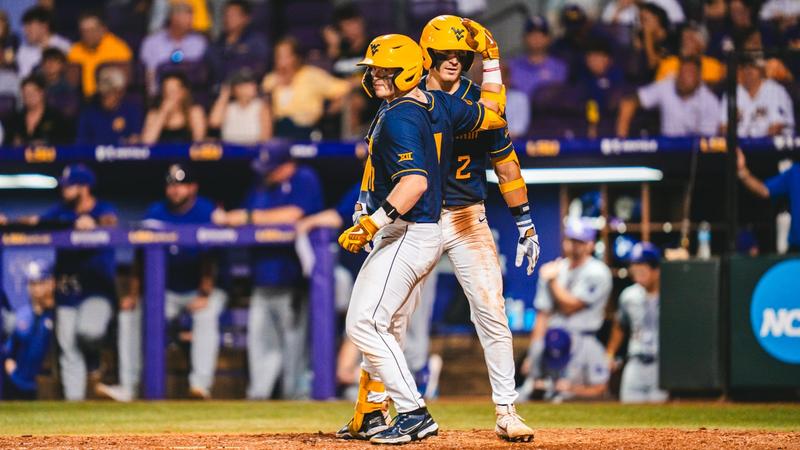
BATON ROUGE, La. – The West Virginia University baseball team saw its season come to an end on Sunday as the Mountaineers fell to No. 6 LSU, 12-5, in the NCAA Super Regionals at Alex Box Stadium. WVU finishes the season with a 44-16 overall record.
Juniors Sam White and Ben Lumsden each hit home runs for the Mountaineers and drove in two. Senior Jace Rinehart added his ninth home run of the season as well.
On the mound, graduate Jack Kartsonas suffered the loss with six runs allowed in 2.0 innings. Sophomore Chase Meyer had four strikeouts in 4.0 innings while junior Ben McDougal tossed 2.1 hitless innings.
The Tigers scored a run in the first to take an early lead before adding five in the second to go up 6-0 after two innings.
In the fourth, White got the Mountaineers on the board with a solo home run before Lumsden added a two-run shot a couple of batters later. White got West Virginia within two in the fifth with an RBI single.
WVU’s defense failed them in the seventh with three errors as LSU scored six runs, five of which were unearned.
In the eighth, Rinehart hit a solo home run, but that was the end of the scoring for West Virginia.
LSU advances to the College World Series which begins Friday, June 13 in Omaha, Nebraska.
For more information on the Mountaineers, follow @WVUBaseball on Twitter, Facebook and Instagram.
NIL
Pete Thamel considers potential Sherrone Moore penalty in NCAA's Connor Stalions case
The Michigan Wolverines and Connor Stalions case is once again heating up as Stalions showed up at an NCAA Infractions hearing. That’s led to further concerns about what the future may hold as it relates to a penalty against head coach Sherrone Moore. Pete Thamel dove in depth into the situation on the College GameDay […]
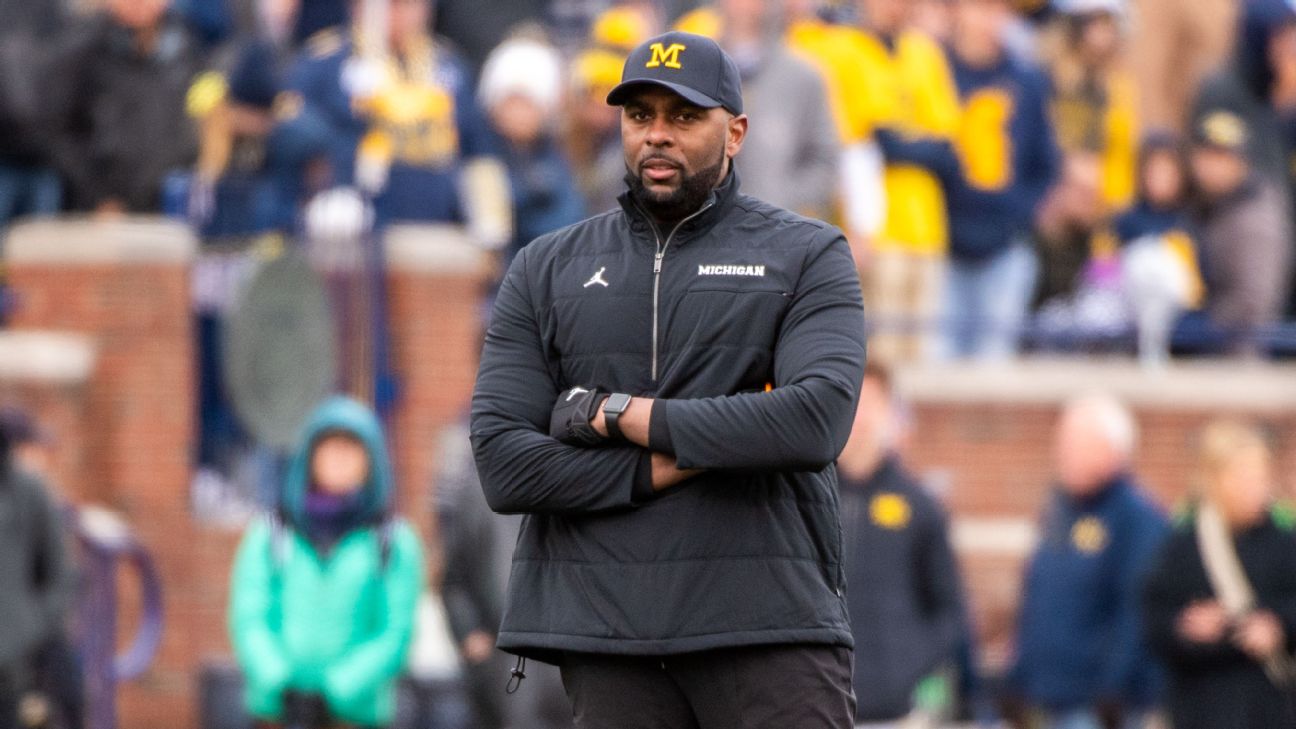

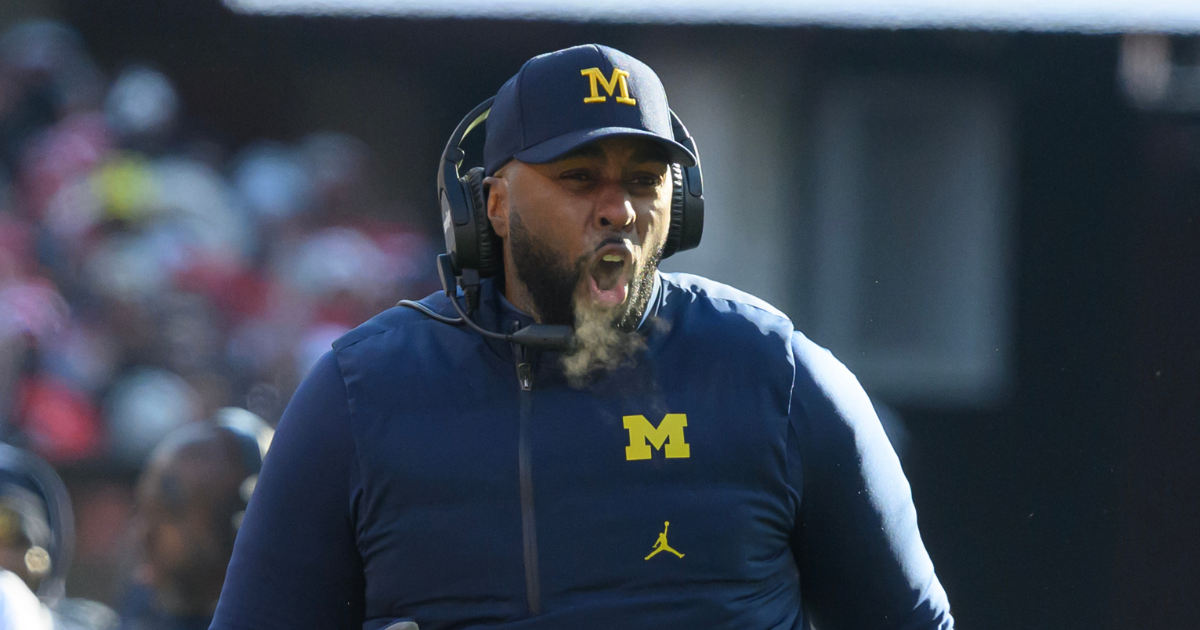
The Michigan Wolverines and Connor Stalions case is once again heating up as Stalions showed up at an NCAA Infractions hearing. That’s led to further concerns about what the future may hold as it relates to a penalty against head coach Sherrone Moore.
Pete Thamel dove in depth into the situation on the College GameDay Podcast. There, he explained that Michigan and the NCAA are in what could be considered a kind of negotiation over Moore, exemplified by the two-game suspension the school self-imposed on Moore.
“We’ll start with Moore,” Pete Thamel said. “The two games self-imposed. When you’re negotiating, you don’t do too much. Clearly, that’s a signal from the other side that the NCAA/committee seems like they think he should be suspended for more, and it’s a negotiation. They’re going to meet in the middle.”
Under Moore’s suspension, he would miss Week 3 and Week 4 of the 2025 season. That would extend beyond the games and into practice, seemingly making the suspension harsher as Michigan looks to negotiate and show they’re serious about the punishment.
“So, the most important thing that I don’t think has been talked about a lot with Moore’s potential suspension is he would also have to miss practice those two weeks. I’ve talked to a couple of coaches about this… if you said, ‘Hey, you can coach practice all week and not coach the game or coach the game and not practice all week,’ they would clearly coach practice all week because that’s when you’re putting everything in. The game is just the calling of the plays. It’s still important to coach the game, but given the choice between the two,” Thamel said.
“Back in the day, like 10, 12 years ago I remember Jim Boeheim got suspended at some juncture at Syracuse and he had to miss practice. He was just like gone for a while and there’s a difference because you’re not developing your team in that. That changed. [Jim] Harbaugh for those three games he was suspended to start the year — the NCAA suspension, not the Big Ten one — he was around until like midnight the night before. Something like that. So, he basically did all the things and didn’t do that.”
Sherrone Moore was Michigan’s offensive coordinator during the Connor Stalions scandal. At the time, it was considered a second potential offense, making him a repeat offender. Moore would be accused of deleting text messages to conceal them from the NCAA relating to the scandal, in particular.
“So, it’s reasonable to ascertain that Michigan is going in low with the two. Now, whether he actually ends up missing those two,” Thamel said. “Whether that’s accepted, whether they do more, there are a lot of variables here. That is more like a negotiation point with the third and fourth game this year.”
Is the Connor Stalions case the last its kind?
The NCAA is still running the investigation into Connor Stalions and Sherrone Moore. However, as Pete Thamel explained, that could make it the last of its kind.
“The interesting thing from the macro here is this case may be remembered as the last explosive NCAA case that we ever see. Enforcement as we know it is going to be shifted to the new organization” Thamel said. “And the new CEO, and a lot of that stuff is being socialized…for how it’s all gonna go. NIL Go, Deloitte. I was told the other day that the presentations that they’re doing at these conference meetings, for example, that the deadline for a case to be decided for a student-athlete is 45 days. I mean, you couldn’t even clear your throat for 45 days in this current slog.”
The House Settlement is changing enforcement in college sports. The power conferences are establishing a new enforcement arm that’s going to be called the College Sports Commission. Major League Baseball executive Bryan Seeley has been named CEO to lead it, changing how investigations will be run moving forward.
“And there’s a lot of ifs. I’m not going to downplay that. Now, the NCAA will still have an enforcement staff. They’ll deal with academic stuff and a lot of things under the purview. But, in terms of… academic stuff, and there will still be academic fraud and that type of thing. That’s not gonna go away… But I think this is one of the smartest things the NCAA has ever done is getting enforcement out of its building,” Thamel said.
“Because it was the least effective, least popular, and most toxic part of that organization. A lot of the NCAA’s bad reputation over the years, especially under Mark Emmert as it toiled and was kind of rudderless and directionless and impotent, the face of the NCAA’s unpopularity was often this process and how it worked. It was fairness to kids. It was this, it was that. So, the tenor that I’ve gotten is ‘good luck college sports. Good luck new CEO. You can take the bullets because this all sounds good until the first big punishment comes. Like, we know the ripple. We know what it feels like. We know how it’s gonna go.’ So, there is a lot earnest people trying hard, but there’s also a lot of wait and see from people who have lived a lot of these cases.”
Regardless, the Michigan case is still up in the air and being investigated by the NCAA. Only time will tell if the NCAA accepts the self-imposed suspension for Sherrone Moore or demands a steeper punishment.
-

 College Sports3 weeks ago
College Sports3 weeks agoPortal Update – Basketball and Gymnastics Take Hits
-

 Professional Sports3 weeks ago
Professional Sports3 weeks agoJon Jones answers UFC retirement speculation as fans accuse champion of 'holding the belt …
-

 Youtube3 weeks ago
Youtube3 weeks agoXavier Legette taught Marty Smith his signature celly
-

 Motorsports3 weeks ago
Motorsports3 weeks agoWhy IHOP Rode With Dale Earnhardt Jr. In Amazon NASCAR Debut
-

 NIL2 weeks ago
NIL2 weeks ago2025 NCAA Softball Tournament Bracket: Women’s College World Series bracket, schedule set
-

 College Sports3 weeks ago
College Sports3 weeks agoNCDC Commitment Profiles: Cyclones’ Martins Moving On to Saint Anselm College • USPHL
-

 High School Sports3 weeks ago
High School Sports3 weeks agoToday in the MHSAA
-

 Health4 days ago
Health4 days agoOregon track star wages legal battle against trans athlete policy after medal ceremony protest
-

 Professional Sports4 days ago
Professional Sports4 days ago'I asked Anderson privately'… UFC legend retells secret sparring session between Jon Jones …
-

 College Sports1 week ago
College Sports1 week agoIU basketball recruiting

























 STEPHEN A. CALLS OUT LEBRON for Giannis and NBA eras comments
STEPHEN A. CALLS OUT LEBRON for Giannis and NBA eras comments  | First Take
| First Take







